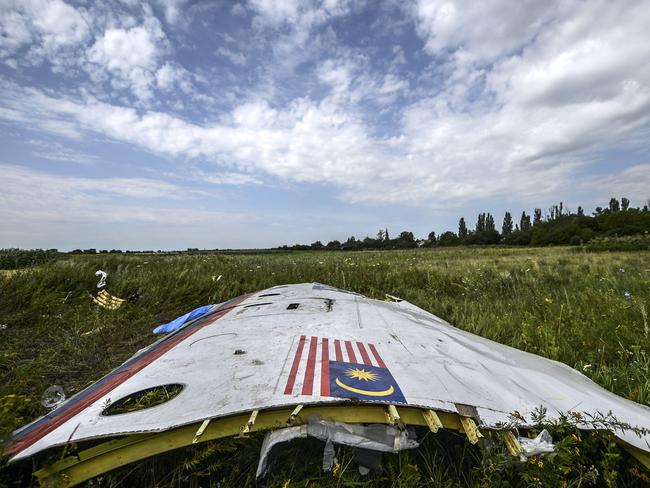Russian missile shot down MH17, international investigation finds
FOREIGN Minister Julie Bishop has demanded an explanation from Russia after investigators confirmed the missile which shot down MH17, killing 38 Australians, belonged to its army.

World
Don't miss out on the headlines from World. Followed categories will be added to My News.
RUSSIA has questions to answer, Julie Bishop says, after investigators confirmed the missile which shot down Malaysia Airlines flight 17, killing 38 Australians among 298 people on-board, belonged to its army.
The Foreign Affairs Minister says Australia and a range of other countries are now considering “political and legal steps” they can take to hold those responsible for the “atrocious act” to account.
Australia, Belgium, Malaysia, the Netherlands and Ukraine are united in their bid for justice for the victims, Ms Bishop said.
“I think Russia has questions to answer,” she told Sydney radio 2GB this morning.
RELATED: How MH370 crash unfolded
RELATED: MH370’s most chilling theory yet

“As you know, President Putin signed up to the UN Security Council Resolution 2156 back in July 2014 that said that all states must do what they can to hold the perpetrators to account, that all states must co-operate in the investigation,” she said.
“Well, I call on Russia to do precisely what they signed up to.”
International representatives, including the Australian Federal Police, told a press conference in The Netherlands they had evidence that the plane was shot down by a Buk-TELAR missile from Russia.
It was a “significant” finding, Ms Bishop said.
“We knew a Buk missile had been used to shoot down MH17 but we now know it belonged to Russian Federation’s 53rd anti-aircraft missile brigade.
“This is a military brigade, it belongs to the Russian Army.
“So this raises the obvious question, how is it that such a sophisticated weapon belonging to the Russian Army was dispatched to Ukraine, used to shoot down a civilian aircraft and then returned to [Russia]?”

Ms Bishop said that it was still unclear why the perpetrators chose to shoot down a civilian aircraft.
But she said more details were likely to emerge in the prosecution run by Dutch authorities, and backed by Australia.
Overnight, Dutch National Police said that the missile was from the Russian military’s 53rd anti-aircraft missile brigade based in the Russian city of Kursk.
The passenger jet was headed from Amsterdam to Kuala Lumpur when it was blown out of the sky over eastern Ukraine on July 17, 2014.
Earlier findings said the missile launch site was an agricultural field controlled by pro-Russian fighters.
The Joint Investigation Team also revealed remnants of the actual missile used — an exhaust and casing — they have been analysing and pleaded for anyone with more information about the parts to come forward.


The casing includes a handwritten manufacturing code which JIT have traced to a company in Moscow.
The finding comes after Australia pledged $50 million in the May budget to help Netherlands authorities prosecute those accused of shooting down flight MH17.
The money will meet Australia’s share of the prosecution costs and help family members of the victims to participate in the court proceedings.
Netherlands chief prosecutor Fred Westerbeke said they had analysed hundreds of photos and videos of the missile launcher travelling from Kursk to Ukraine to create a “fingerprint ID” which confirmed it had come from the 53rd brigade.

He said the missile launcher had disrupted traffic as it was driven across the border to Ukraine leading to hundreds of members of the public to photograph it.
Mr Westerbeke said they had also narrowed their suspect list down from about 100 to a few dozen.
He said he would not reveal anymore about the suspect list — including whether any of those people were Russian — at risk of harming the investigation.
“If you know anything or have information of the 53rd brigade now is the time to step forward,” Mr Westerbeke said.
“We have witness protection in each country of JIT members.”

He hit back against accusations the pleas sounded “desperate” and the investigation had made very little progress in four years.
“We are not desperate, we are very confident. We are going to finish the investigation in a good way,” he said.
Australian Federal Police Commander Jennifer Hurst said the team was making “good progress” in a very complex investigation.
“We have 298 precious reasons why to keep going,” Ms Hurst said.
The Australian victims included three Maslin children from Perth, Mo, 12, Evie, 10, and Otis, 8, who were flying with their grandad Nick Norris.


